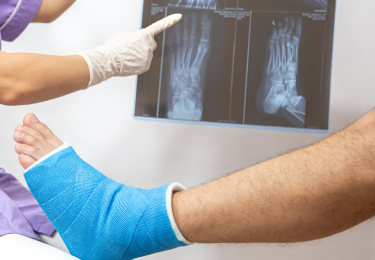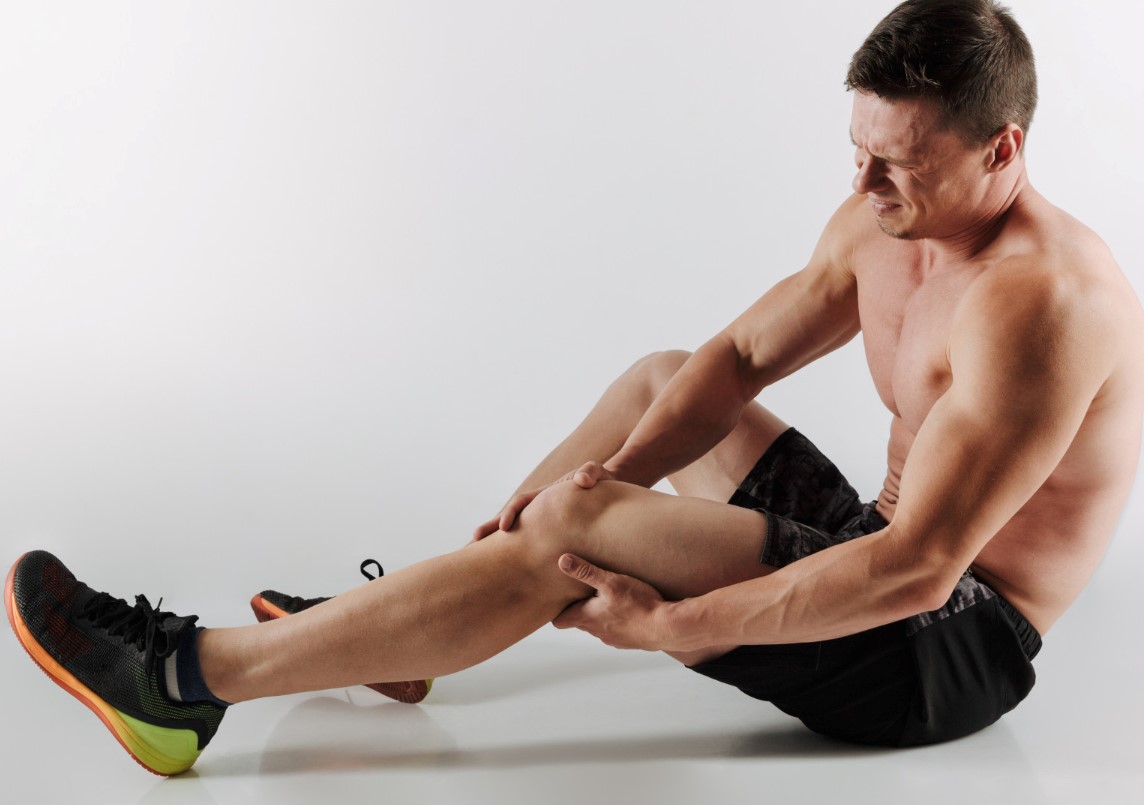Stress Fractures
In Singapore

Dr Chiam Tut Fu

MBBS (Singapore)
MSS (Sports Medicine) (USA)
MMed (OM) (Singapore)
GDOM (Singapore)
DWD (Singapore)

Overview
Stress fractures are tiny cracks in a bone that occur over time due to repetitive force, often from overuse — such as repeatedly jumping up and down or running long distances. They are common in weight-bearing bones of the foot and lower leg, often seen in athletes and military recruits.

Causes
- Overuse and repetitive activity: Stress fractures often occur in individuals who have recently started a new exercise or dramatically increased the intensity or duration of their workouts. The repeated stress on the bone causes damage that outpaces the body’s ability to repair and strengthen the bone, leading to a fracture.
- Sudden increase in physical activity: A sudden increase in physical activity can place extra stress on the bones, leading to fractures. This is often seen in individuals who are normally sedentary and then suddenly start an intense exercise regimen.
- Changes in surface or equipment: A change in training surface, such as switching from running on a treadmill to running on pavement, can increase the risk of stress fractures. Similarly, using worn-out or inappropriate equipment, like shoes that don’t provide proper foot support, can also contribute to the risk.
- Osteoporosis or other conditions that weaken the bones: Conditions that weaken the bones, such as osteoporosis, can make individuals more susceptible to stress fractures. The weakened bones are less able to withstand the regular stress of physical activity, leading to fractures.

Symptoms
- Gradual onset of pain: The pain associated with a stress fracture is usually minimal in the beginning, and then worsens over time. It might be barely noticeable at first, and then become more severe over days or weeks as the fracture worsens.
- Pain that worsens with physical activity and improves with rest: The pain is often worse during weight-bearing activities and improves with rest. You might experience pain during normal daily activities.
- Swelling and tenderness at a specific point: There might be swelling at the site of the fracture and tenderness to touch. The area might also feel warm to the touch.
Common Locations of Stress Fractures
-
Foot and Ankle (Metatarsals and Navicular)
These bones in the foot bear the weight of the body during walking and running, making them susceptible to stress fractures.
-
Leg (Tibia and Fibula)
The bones in the lower leg are common sites for stress fractures, particularly in runners and other athletes whose sports involve running.
-
Hip and Pelvis (Femoral neck and Pubic bone)
Stress fractures in the hip and pelvis are less common but can occur in runners and military recruits.

Diagnosis
-
Medical history and physical examination
Your doctor will ask about your symptoms, physical activities, medical history, and dietary habits. They will also perform a physical examination to check for tenderness or swelling.
-
Imaging tests
X-rays can sometimes reveal stress fractures, but they often don't show up until the fracture has started to heal. More detailed imaging tests, such as an MRI or bone scan, are often needed to diagnose stress fractures.
Minimally Invasive Treatments We Use To Treat
Stress Fractures
An injection that alleviates pain and inflammation associated with musculoskeletal conditions such as arthritis, bursitis, tendinitis and joint pain.
Targeted pain relief in the administered area and reduced inflammation.
Little to no recovery time. Patients may resume their normal activities promptly.
Works well in chronically injured tissues which may have very slow recovery
Anti-inflammatory and regenerative effects
Little or no downtime and patients can walk out after the 30 min procedure
Treats flare-ups of OA pain and swelling with fluid buildup in the knee
Reduces inflammation in the joint
Can quickly relieve these symptoms, usually within 1-3 days
Uses low-level light to stimulate healing. Does not cause your tissues to heat up. LLLT is used to treat various musculoskeletal conditions, reduce inflammation, and promote wound healing.
Painless, Quick, Effective, and No downtime. Patients can return to their normal activities immediately after an LLLT session.

Dr Chiam Tut Fu 
(詹达夫医生)
MBBS (Singapore)
MSS (Sports Medicine) (USA)
MMed (OM) (Singapore)
GDOM (Singapore)
DWD (Singapore)
Dr Chiam is a MOH accredited Specialist in Sports Medicine and has practised medicine for over 30 years.
Dr Chiam Tut Fu obtained his MBBS from National University of Singapore in 1990. He went on to obtain his Masters in Sports Science (Sports Medicine) from the United States Sports Academy, graduating as the year’s outstanding student, and Masters of Medicine (Occupational Medicine) from the National University of Singapore.
Key Interests:
- Non-surgical treatment of sports injuries
- Non-surgical treatment of degenerative conditions
- Nutraceuticals for healthy ageing and exercise performance
Need Advice On Your Condition?
Do you have an enquiry about your sports injury or body joint condition? Please leave us a message and we will be in touch with you shortly.
Mon to Fri: 9:00am – 1:00pm
2:00pm – 6:00pm
Sat: 9:00am – 1:00pm
Sun & PH: Closed
Singapore Paincare Center
Paragon Medical Centre, #18-03
290 Orchard Road, Singapore 238859
Partnered Programs & Insurance Plans
For Singaporeans, Singapore Permanent Residents and Foreigners.
Please speak to our friendly clinic staff about using your insurance plans.
Frequently Asked Questions
What activities are most likely to cause stress fractures?
Activities that involve repetitive impact on the bones, such as running, jumping sports, and dance, are most likely to cause stress fractures. Military training, particularly in recruits who are not used to the intense physical activity, also has a high incidence of stress fractures.
How can stress fractures be prevented?
Prevention strategies include gradually increasing the intensity and duration of physical activity, eating a balanced diet rich in calcium and Vitamin D for bone health, wearing appropriate footwear, and incorporating cross-training and strength training into your exercise regimen to improve the muscles’ ability to absorb impact.
What is the recovery process for a stress fracture?
Recovery from a stress fracture typically involves rest and refraining from the activity that caused the fracture. Depending on the location and severity of the stress fracture, you may need to wear a boot or cast and use crutches. Once the fracture has healed, a gradual return to activity is recommended under the guidance of a healthcare professional.
Can I continue to exercise with a stress fracture?
Continuing to exercise with a stress fracture can lead to more serious injury. Rest and allow the fracture to heal. Non-weight-bearing exercises, such as swimming or cycling, may be possible, but it’s best to discuss this with your specialist.
How can I tell the difference between a stress fracture and regular foot or leg pain?
Stress fractures are usually characterised by a specific area of sharp pain that worsens with weight-bearing activity and improves with rest, along with swelling and tenderness at the site of the fracture. Regular foot or leg pain may be more diffuse and not necessarily linked to weight-bearing activity.